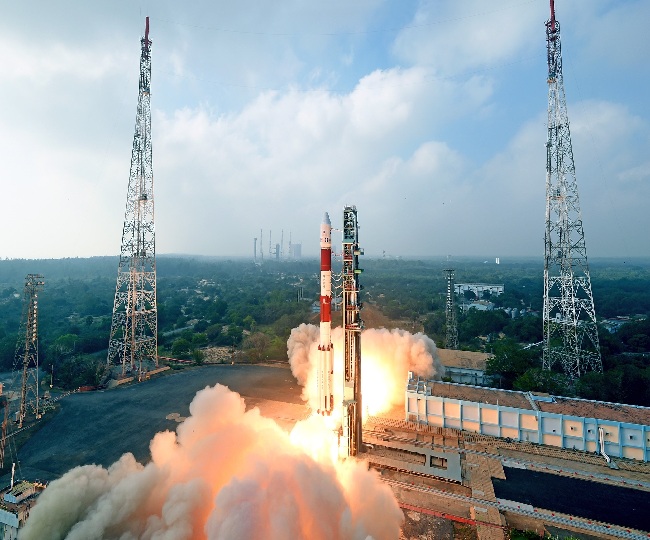American Companies Show Keenness For Collaboration With ISRO’s Programmes

In 1990s USA had done its level best to sabotage Indian Space programme by putting hurdles in ISRO’s plan for obtaining cryogenic engines and cryogenic technology from Russia.
Next CIA was probably fully involved in the Nambi Naryan case through which the entire Cryogenic engine development plan was nearly finished. It did bounce back is a different story.
Then the most recent us the famous cartoon which had been published un USA right after India had been successful in its quest to planet Mangal. However just a few years down the lane ISROs rickets began placing even American satellites into orbit.
So far ISRO’s Polar Satellite Launch Vehicle (PSLV) has been the chosen one as a low-cost launch option for the small satellites built by the American private sector.
In September 2015, ISRO launched four LEMUR remote sensing satellites, followed by the launch of several satellites built by the American private sector onboard Polar Satellite Launch Vehicle (PSLV).
Last year, around thirteen commercial nanosatellites from the US were launched on PSLV.
Whatever doubts the American Companies had got cleared by the Indian Chandrama missions, the Anti satellite Tests and now the planned Gaganyaan missions and sending Gaganyatris to Chandrama.
So no wonder topping the agenda of talks between India and the US leaders later this month will be potential space defence cooperation as well as deeper cooperation between Indian Space Research Organisation and the American Space Agency NASA.
Besides lunar exploration and working on the Space Station, the two space agencies are seeking deeper cooperation in interplanetary and cooperation in the human space flight and Space Station.
When the US President Donald Trump visits India later this month (in case it does not get nixed by either of the sides ) Space Cooperation between ISRO and NASA and related areas will be on the agenda of talks at the delegation-level.
Space agencies of the two countries will be launching the jointly developed NASA-ISRO Synthetic Aperture Radar (NISAR) satellite in 2022.
India and the US has already been started working together in the Satellite Navigation (SatNav). The US Congress probably had no choice left but to designate the Indian Regional Navigation Satellite System (IRNSS) or better known as the NaVIC as an “allied system”.
After the rigorous selection process for the first-ever manned mission Gaganyaan in 2022, four Indian astronauts will be going to Russia for advanced training. This is under the agreement between the Roscosmos State Corporation for Space Activities and ISRO.
As part of the training, under this agreement, the Indian astronauts will go on a short visit to the International Space Station (ISS) on board a Soyuz spacecraft.
Alarmed by the above the US Space Agency NASA too is expected to offer contribution and try to play an important role in the Human Mission of ISRO by sharing its expertise as well as training facilities.
According to the joint statement released at the end of the second India-US 2+2 Dialogue last winter, both sides recognized space cooperation, including on Earth science and lunar exploration, as a critical component of the India-US relations.
In the recent years Space diplomacy has become a very important part of International Security. India offers not only economically feasible satellite launches, but has achieved major successes in the Space Sector including the Mars Mission. This itself has become a major attraction for the countries including the US, Russia, Japan, and China.
According to sources, “Two top US companies are in talks with ISRO and want to be part of Space Station Programme of ISRO and other related areas of the Human Mission. The talks are in preliminary stages.
India will become a member of the elite club of countries once it has its own space station.
The first Indian Space Station will be a satellite in low Earth Orbit and functions as a Space Station. So far there is only one International Space Station. This spacecraft has the capability to support the crew members and can stay in space for an extended period.




